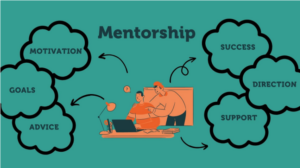Are you torn between the convenience of e-learning and the traditional on-site studying experience? You’re not alone. The up-and-coming e-learning industry has been a topic of debate for years, with some praising its flexibility and accessibility while others criticize its lack of social interaction and hands-on learning opportunities. As we navigate the digital world, it’s crucial to weigh the pros and cons of online teaching. Studying online may seem like a disadvantage, but the flexibility that online learning offers is an undeniable advantage. It’s crucial to acknowledge that the effectiveness of online learning is variable due to different life circumstances. So, let’s dive into this complex topic and explore how we can make the most out of e-learning in today’s world.
In post-COVID times, when it comes to e-learning, there are positive and negative aspects to consider. On the one hand, students can benefit from the convenience of online learning. However, many may miss out on the benefits of on-site studying, such as group work and face-to-face interactions. Besides, it is highly personal to prefer online or offline learning. People decide for themselves for or against e-learning based on different aspects: learning goals, preferences, and learning styles; thus, their learning methods vary.
There are four distinctive learning styles according to the VARK model: visual, aural/auditory, reader and writer, and kinesthetic (Fleming and Mills 1992). Those who prefer auditory learning prefer learning in class, but this does not exclusively mean that they would not like e-learning, as they can also view videos and learn from them. In most cases, they prefer to listen or utter words to learn. As their name suggests, the reader-writer types like to write and read to memorize things and, therefore, often repeat things in written or read form. The kinesthetic types engage in physical movements and learn as they move or do sports. How to acquire knowledge is subjective as everyone decides whether to like one over the other learning styles or even to vary them to have the best customized learning experience. We will have the best learning outcome once we know which learning style we like the most.
Additionally, e-learning’s effectiveness heavily depends on external factors such as parents’ income, location, internet access, and technical literacy. Despite these challenges, digital tools in today’s classrooms have become increasingly popular, and platforms like Mentimeter, Duolingo, and Kahoot attempt to deliver fun learning. Gamification is an essential concept that can turn basically anything into a game. For example, when it comes to gamification, studying is replaced by a treasure hunt or an adventurous challenge with final awards and progress points. Once learning is gamified, then inevitably, studying becomes a game and is more enjoyable and, therefore, fun. Again, a lot lies in the manner of learning and how different learners remember things. Above all, gamification is a great starting point for making kids initially love learning.
Today, e-learning platforms are inherent in modern education, and new learning outcomes and course structures arise. For instance, kids are generally more prone to understand and use technical gadgets and can quickly become tech-savvy. At TeachSurfing, we believe that e-learning platforms and digital tools benefit a class, but these cannot substitute for a teacher’s care, experience, and attention. However, online self-learning is possible with the right tools and proper assistance after a certain age. But again, it is significant to point out that students must receive guidance from a teacher or mentor to reach desirable learning goals.
Studying online has become a new trend that has increased in recent years, resulting in the industry’s development due to market surges. The above-noted advancements make the e-learning industry more desirable and accessible for students and teachers alike. Our e-learning add-on for GoodMatch.cloud extends the capacity of GoodMatch to provide real connections, skills-sharing, and display digital content. Suppose you are a trainer, learner, or part of an organization seeking to provide online courses or webinars. In that case, our GoodMatch software solution has a practical add-on feature that can help you attract more clients and members. If you want to join the e-learning business but are not yet a trainer, check out our e-VELP courses to become a successful trainer.



